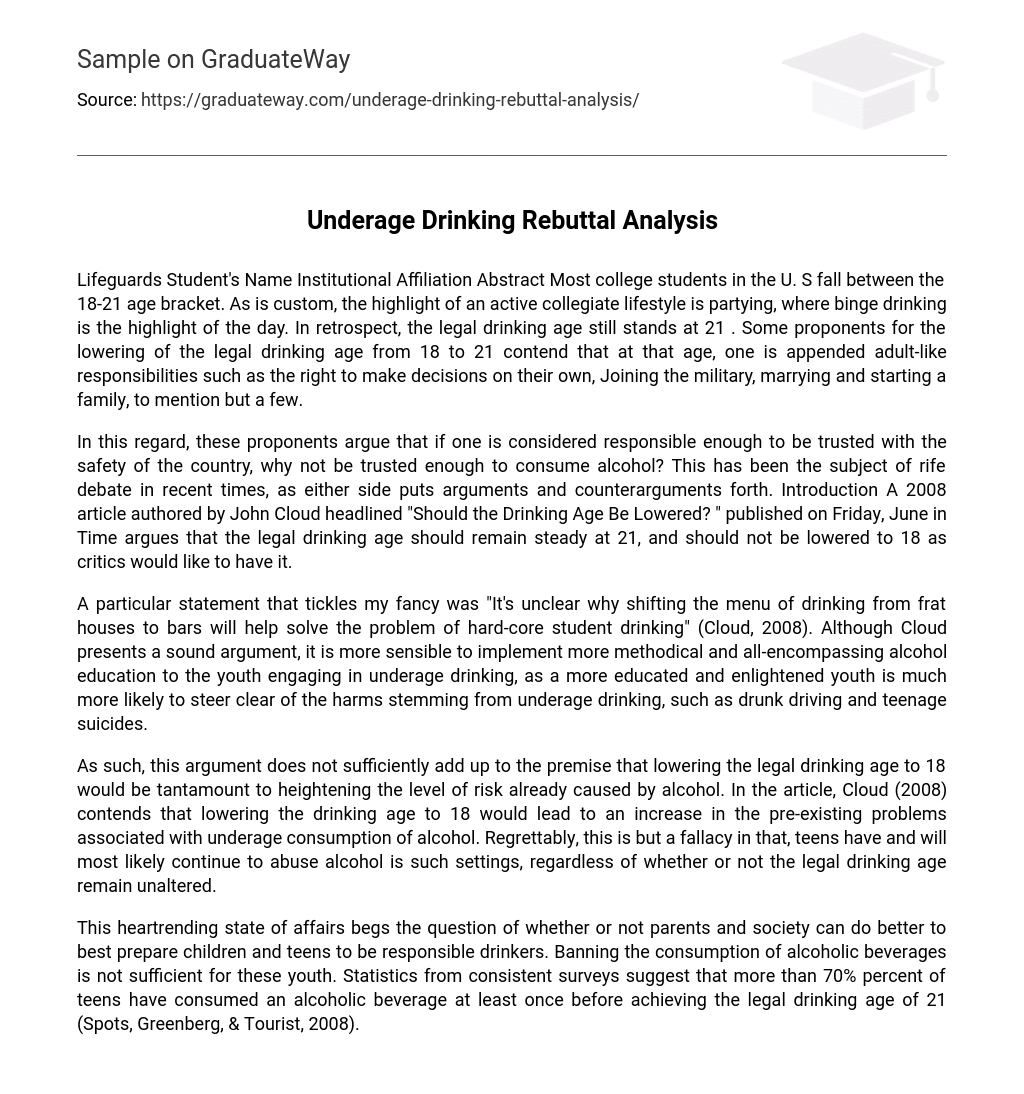Lifeguards Student’s Name Institutional Affiliation Abstract Most college students in the U. S fall between the 18-21 age bracket. As is custom, the highlight of an active collegiate lifestyle is partying, where binge drinking is the highlight of the day. In retrospect, the legal drinking age still stands at 21 . Some proponents for the lowering of the legal drinking age from 18 to 21 contend that at that age, one is appended adult-like responsibilities such as the right to make decisions on their own, Joining the military, marrying and starting a family, to mention but a few.
In this regard, these proponents argue that if one is considered responsible enough to be trusted with the safety of the country, why not be trusted enough to consume alcohol? This has been the subject of rife debate in recent times, as either side puts arguments and counterarguments forth. Introduction A 2008 article authored by John Cloud headlined “Should the Drinking Age Be Lowered? ” published on Friday, June in Time argues that the legal drinking age should remain steady at 21, and should not be lowered to 18 as critics would like to have it.
A particular statement that tickles my fancy was “It’s unclear why shifting the menu of drinking from frat houses to bars will help solve the problem of hard-core student drinking” (Cloud, 2008). Although Cloud presents a sound argument, it is more sensible to implement more methodical and all-encompassing alcohol education to the youth engaging in underage drinking, as a more educated and enlightened youth is much more likely to steer clear of the harms stemming from underage drinking, such as drunk driving and teenage suicides.
As such, this argument does not sufficiently add up to the premise that lowering the legal drinking age to 18 would be tantamount to heightening the level of risk already caused by alcohol. In the article, Cloud (2008) contends that lowering the drinking age to 18 would lead to an increase in the pre-existing problems associated with underage consumption of alcohol. Regrettably, this is but a fallacy in that, teens have and will most likely continue to abuse alcohol is such settings, regardless of whether or not the legal drinking age remain unaltered.
This heartrending state of affairs begs the question of whether or not parents and society can do better to best prepare children and teens to be responsible drinkers. Banning the consumption of alcoholic beverages is not sufficient for these youth. Statistics from consistent surveys suggest that more than 70% percent of teens have consumed an alcoholic beverage at least once before achieving the legal drinking age of 21 (Spots, Greenberg, & Tourist, 2008).





